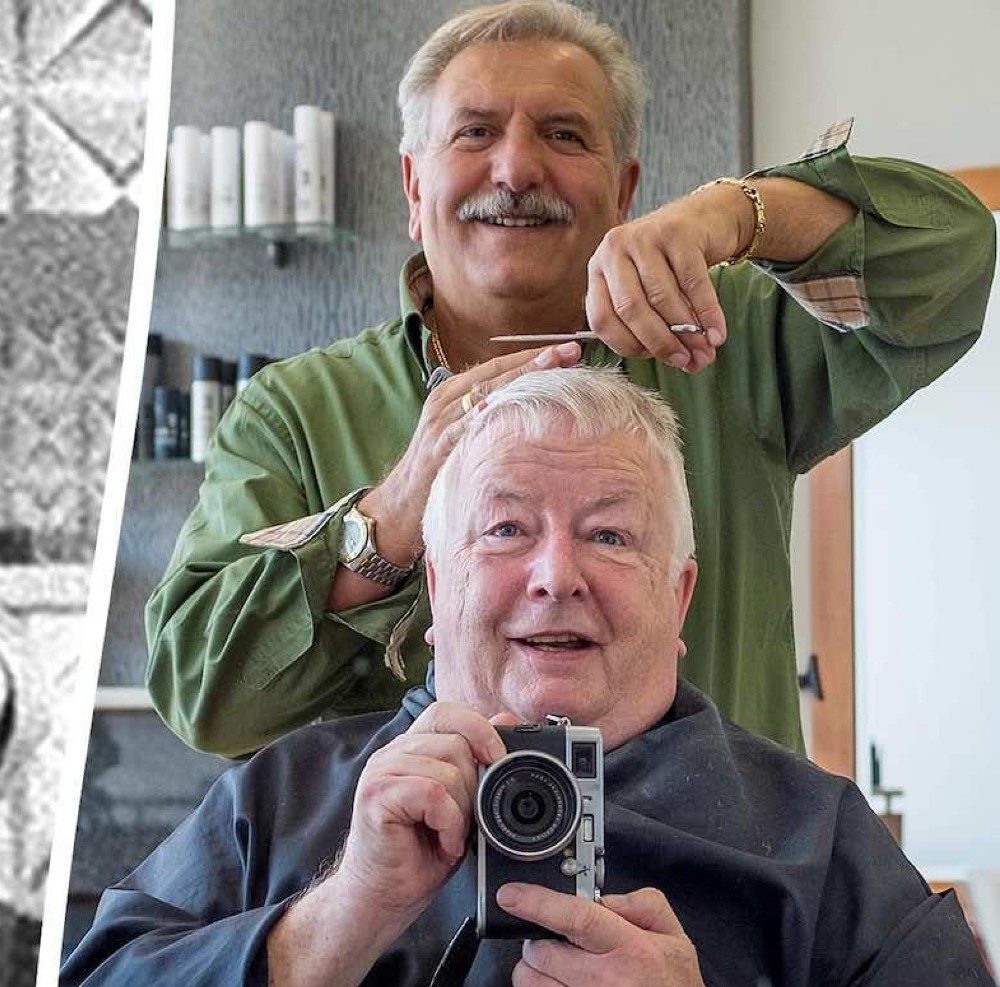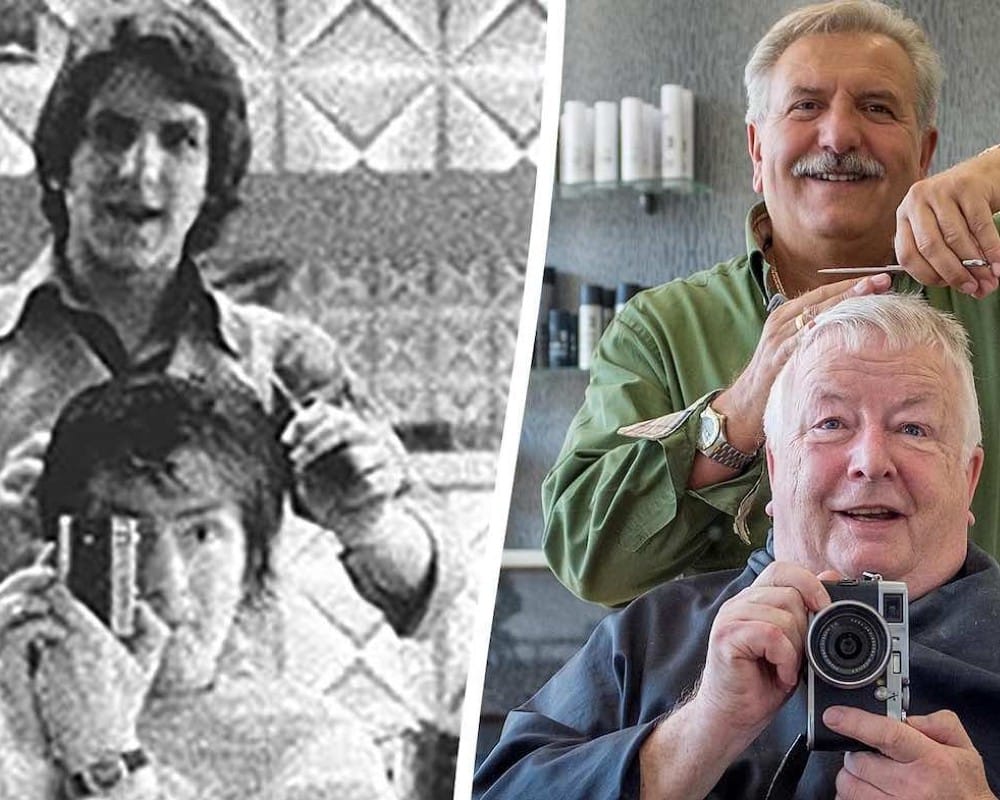
In a heartwarming tradition that spans five decades, newspaper photographer Sam Farr has documented his friendship withbarber Joe Pace through a series of self-portraits taken every 10 years. The touching photos — taken at “Giuseppe’s of Bath” in England — capture the passage of time, the growth of their bond, and the changing technology. The series of selfie shots reflect a remarkable friendship and the joy of two friends growing older together.
The Beginnings of a Tradition
The heartwarming tradition began in 1973 when Sam Farr purchased a new Rolleiflex camera for around $130. Curious to see what he looked like on the other side of the camera lens, he decided to take a self-portrait while getting his hair trimmed by his barber and friend, Joe Pace. Little did he know that this candid selfie would mark the inception of a touching tradition, which would endure for the next five decades.
Selfies Through the Years
Over the years, the series of selfies showcased the deepening friendship between Sam and Joe. In each photo, their smiles grow wider, reflecting the joy of their connection.

The camera models evolve as technology advances, from vintage cameras to the modern convenience of an iPhone — but their bond remains the same.
Celebrating Friendship
The milestone of 50 years marked a special celebration of their friendship, with Joe giving Sam a free haircut. The tradition has become a cherished part of Sam’s family with his daughter, Nicky, expressing her appreciation for the lasting bond between her father and Joe. The photographs have garnered attention on social media, evoking heartwarming comments. According to Nicky, as Sam’s battle with Parkinson’s makes it increasingly difficult for him to hold a camera, the latest photo may be the final one in the series. Nevertheless, the cherished tradition of friendship captured through the years stands as a testament to the power of lasting connections.